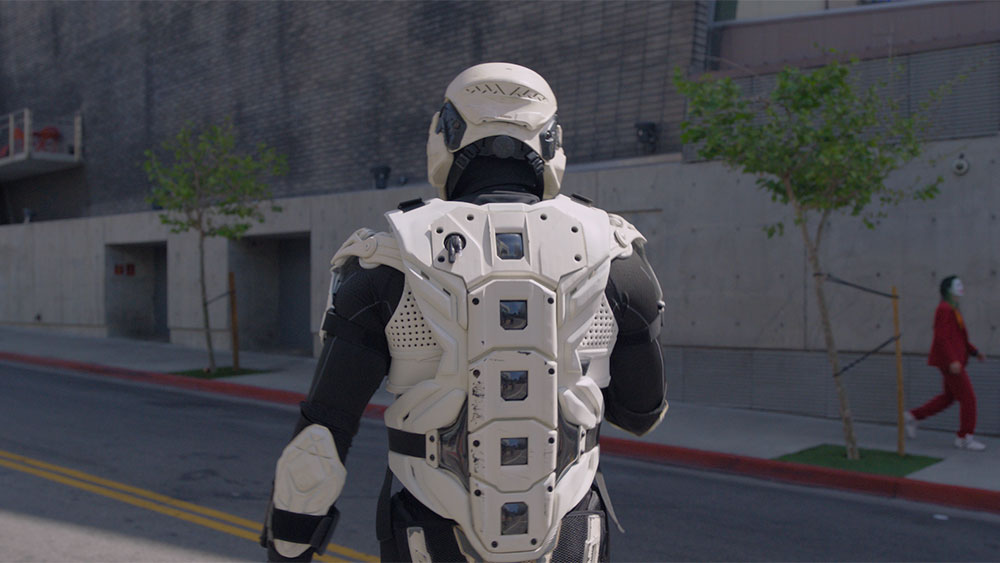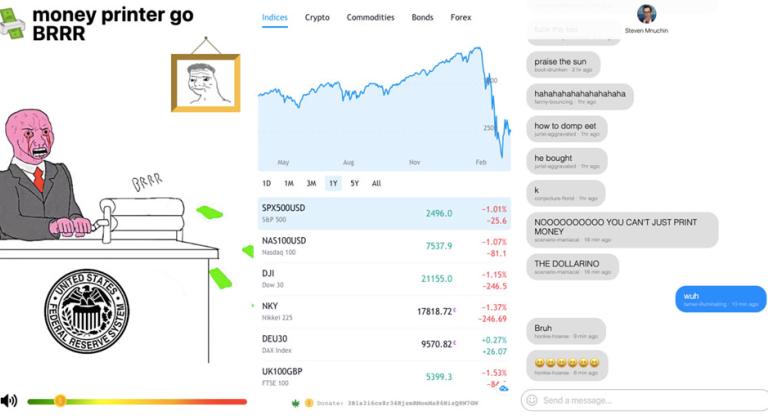For more than a decade, Andrew Norman Wilson has investigated how digital labor is conditioned by and materializes structures of power, mass online paranoia and hysteria, and the informational turn of biopolitics. His video essays have always been defined by a sense of conspiratorial secrecy and the deferral of meaning to the implicated viewer. His breakthrough Workers Leaving the Googleplex (2011) was made from illicit footage shot in 2007 while Wilson was a contractor at the corporation’s Silicon Valley campus. On view on the second floor of the museum, the piece enjoys a minimalist coolness thanks to both the sculptural installation and the austerity of its cinematic language—unmoving and clinical. Unemotive narration details the physical subjugation and forced invisibility of a classified group of majority-non-white workers (“ScanOps”) who manually digitize the Google Books collection page by page. The investigative narrative unfolds analytically, resulting in a social realist documentary that meditates on the limits of truth. The camera angle is reminiscent of the direct and confrontational gaze of Harun Farocki’s film essay Workers Leaving the Factory (1995). A reluctant admission that some, if not all, of the original footage was confiscated or lost begs the question: is what we see merely a fictive recreation constructed after the expiration of Wilson’s non-disclosure agreement? Workers Leaving the Gooleplex shares similar ideological commitments with Wilson’s later works yet diverges in terms of aesthetic strategy.
Most of Wilson’s recent videos are best approached and appreciated through their affinity for affect, fiction, and popular culture. In Ode to Seekers (2012), various dazzlingly sophisticated imaging technologies take the disembodied virtual camera through an abandoned Upstate psychiatric institute haunted by the failure of its progressive politics. The work stages the molecular theatrics of resource extraction, disease control, and addiction management in impossibly saturated spaces. Each arena of biopolitical warfare is represented by a comically larger-than-life oil drill, mosquito, and syringe needle, all fanatically dancing to “I Love It” by the Swedish dance-music duo Icona Pop, and eventually laid bare on an industrial assembly line after exhausting their vitality. Ode to Seekers’s aspiration toward Romantic humanism using non-human subjects is an erotic onslaught against the anthropocentric perspective of narrative cinema.
Wilson acutely understands how fiction can animate entities at the margins of the human. Collapsing any sense of space and time, The Unthinkable Bygone (2016) presents a Baby Sinclair, lifted from ABC’s early-90s comedy Dinosaurs, sliced in half and endlessly looping through the act of regaining consciousness in a prolonged mirror stage. The simulated dinosaur’s psychology rejects any measurement of subjective truth, and the result of his quest for self-knowledge remains unclear to puzzled viewers.
The visceral cinema of disidentification continues in Z = |Z/Z•Z-1 mod 2|-1: Lavender Town Syndrome (2019) and Z = |Z/Z•Z-1 mod 2|-1: The Old Victrola (2020), which both zoom into aerial views of an apartment balcony in Chicago’s Marina Towers amid the the Great Recession. The latter serves as an activation and study of the scenes and props used in the former. The explosion of critical theory, International Art English, and thought experiments in Lavender Town Syndrome culminates in a reenactment of the eponymous creepypasta: Allegedly, Lavender Town, the burial place of deceased Pokémon in the 1996 video game, extended its digital haunting into the real world and killed off hundreds of Japanese children.
In the Air Tonight (2020) pushes such alternative representational strategy and their fictive detours to the extreme. Tracing the aura of mythmaking surrounding Phil Collins’s 1981 synth-pop hit (especially the false origin story of Collins’s guilt over not having been able to save a drowning victim), In the Air Tonight deploys appropriated imagery— sexual, violent, and ominous—from 1980s films to construct another urban legend: that Phil’s signature hit was inspired by a mysterious encounter with a stranger on the Malibu beach. The haunting shadow of the unnamed man trails after him until the climactic moment of a sold-out concert reveals that the man, seated front row, is none other than Phil himself. The drama of self-overcoming and self-alienation reaches its affective height before a stream of cosmically eruptive images injects a fantastical verve into the neo-noir thriller, reminding us that the story is only fiction. In the Air Tonight marks a new chapter in Wilson’s practice as he meditates on cinema’s ability to deliver potent fictions and all their agitating intensities.
“An Evening with Andrew Norman Wilson” will be presented tonight at the Museum of Modern Art and features the New York debut of a new narrative short, “Impersonator” (2022), pictured at top.




